How To Sew Denim Fabric In 5 Minutes Like A Pro Sewist: 2024
Sewing denim fabric can be a challenging yet rewarding experience. Denim is a durable, versatile fabric that is commonly used for jeans, jackets, and other clothing items.
However, due to its thickness and stiffness, sewing denim requires specific techniques and tools. It is essential to prepare the fabric properly, select the right needle and thread, and use appropriate stitching techniques to ensure success.
In this guide, we will cover the steps and techniques required to sew denim fabric, so you can create stylish and long-lasting garments.
Whether you’re a beginner or an experienced sewer, this guide will provide you with the information you need to successfully sew denim fabric.
How to Sew Denim Fabric
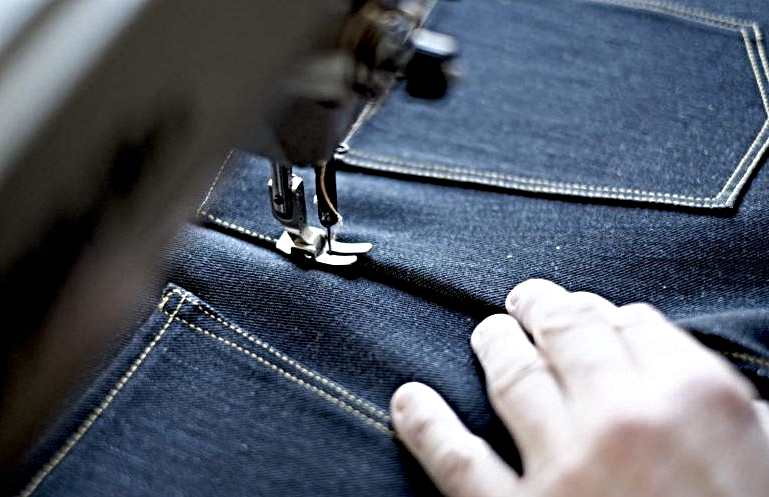
We’ll go through the steps to sew denim fabric easily at home. So, without wasting any time let’s get started.
1. Choosing the Right Denim
When choosing denim for your project, consider the weight and stretch of the fabric. Denim comes in various weights, ranging from lightweight to heavyweight.
Lightweight denim is great for shirts, while heavyweight denim is ideal for jackets and pants. Stretch denim is also available and can be a good choice for fitted garments.
2. Preparing Your Denim Fabric
Before starting your project, prewash your denim fabric to prevent shrinkage. Use a gentle cycle and cold water to avoid fading. After washing, dry your denim on a low heat setting or hang it to air dry. Iron your denim fabric before cutting to remove any wrinkles.
3. Tools You’ll Need for Sewing Denim
Sewing with denim requires some special tools to ensure success. You’ll need a heavy-duty needle, such as a denim needle, to sew through the thickness of the fabric. A size 16 or 18 needle is best for heavyweight denim, while a size 14 needle is suitable for lightweight denim.
You’ll also need heavyweight thread, such as cotton-wrapped polyester thread, to ensure the seams are strong enough to withstand wear and tear.
4. Sewing Machine Settings for Denim
When sewing with denim, adjust your sewing machine settings to accommodate the thickness of the fabric. Use a longer stitch length, between 3.0 to 3.5 mm, to prevent the fabric from bunching up. You may also need to adjust the tension to ensure the stitches are even and tight enough to hold the fabric together.
5. Tips for Sewing with Denim
Sewing with denim requires some special techniques to ensure success. Use pins sparingly to avoid creating holes in the fabric. Instead, use clips or wonder clips to hold the fabric in place.
Sew slowly and carefully, using a walking foot if possible, to prevent the layers of fabric from shifting. When topstitching, use a denim topstitching thread for a professional finish.
6. Sewing Techniques for Denim
There are a few techniques that are particularly useful when sewing with denim. When sewing pockets or other areas that will receive a lot of stress, reinforce the seams with a second row of stitching.
Use flat-felled seams to create a strong and durable finish. To hem denim, use a double-fold hem to prevent fraying.
7. Finishing Your Denim Project
After completing your denim project, finish the seams with either a serger or zigzag stitch to prevent fraying.
If you want to create a distressed look, use sandpaper or a cheese grater to rub away the fabric in certain areas.
Finally, give your project a final press with an iron to ensure a neat and professional finish.
8. Troubleshooting Common Issues with Denim
Sewing with denim can present some common issues, such as skipped stitches or broken needles. If you’re experiencing skipped stitches, try adjusting the needle position or using a larger needle size.
If your needle keeps breaking, try using a needle specifically designed for denim or leather. Additionally, if you’re having trouble feeding the fabric through the machine, try using a walking foot to prevent the fabric from shifting.
How to Set Up Sewing Machine for Denim: Step-By-Step Guide
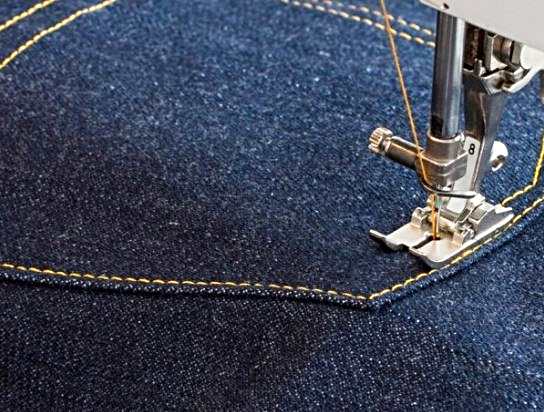
We’ll go through the steps to set up your sewing machine for sewing denim, from choosing the right needles and thread to adjusting the tension and stitch length.
1. Choosing the Right Needles
When sewing denim, it’s important to use the right needles. Regular sewing machine needles may not be strong enough to penetrate the thick layers of denim, so it’s recommended to use a denim or jeans needle instead.
These needles have a sharp, sturdy point that can pierce through multiple layers of denim without breaking.
2. Choosing the Right Thread
Choose a high-quality, sturdy thread such as cotton-wrapped polyester or all-polyester for sewing denim.
Avoid using cotton thread, as it may not be strong enough to hold up to the weight and thickness of denim.
3. Adjusting the Tension
Adjusting the tension on your sewing machine is important when sewing denim. A higher tension can help the needle penetrate the fabric more easily, while a lower tension can help prevent puckering and distortion.
It’s best to experiment with different tension settings on a scrap piece of denim before sewing your final project.
4. Adjusting the Stitch Length
When sewing denim, it’s best to use a longer stitch length than you would for lighter fabrics. This will help prevent the fabric from bunching up or puckering.
A stitch length of 3.5mm to 4mm is a good starting point, but you may need to adjust it based on your specific machine and fabric.
5. Choosing the Correct Foot
The foot you use when sewing denim can make a big difference in the final result. A walking foot or even-feed foot can help feed the layers of denim evenly through the machine, reducing the risk of uneven stitching or skipped stitches. If you don’t have one of these specialty feet, try using a Teflon or roller foot.
6. Threading the Machine
Threading your sewing machine correctly is crucial for achieving good results when sewing denim.
Be sure to follow the instructions in your machine’s manual, and double-check that the thread is properly seated in the tension discs and the needle. Use a thread stand if necessary to prevent the thread from getting caught or tangled.
7. Positioning the Fabric
When sewing denim, it’s important to position the fabric correctly to prevent distortion or puckering.
Place the fabric under the presser foot and lower the foot onto the fabric, making sure it’s straight and aligned with the needle.
Use your hands to guide the fabric through the machine, keeping it straight and taut.
8. Positioning the Fabric (Continued)
Avoid pulling or stretching the fabric as this can cause puckering and distortion. If you’re sewing a curved seam, use clips or pins to hold the fabric in place, rather than relying on your hands.
9. Sewing the Denim
When sewing denim, it’s important to take your time and go slowly. Use a steady, even pressure on the foot pedal and guide the fabric through the machine carefully.
Sew the seam with a straight stitch, keeping the fabric taut and making sure to sew over any bulky seams or layers of fabric.
If necessary, stop periodically to adjust the fabric or release any tangles or snags in the thread.
10. Finishing the Seam
After sewing the seam, it’s important to finish the edges to prevent fraying. You can do this by either serging the edges with a serger machine or using a zigzag stitch along the edge.
You can also trim the excess fabric close to the seam and use a straight stitch along the edge to reinforce it.
If you’re new to sewing, tackling a denim project might seem daunting. However, with a few tips and tricks, sewing with denim can be an enjoyable and rewarding experience.
In this guide, we’ll cover everything you need to know about how to sew denim fabric, from choosing the right fabric to mastering the techniques needed for a successful project.
Can I use a regular sewing machine to sew denim?
Yes, you can sew denim on a regular sewing machine, but it’s important to choose the right needle, thread, and stitching technique for the job.
When sewing denim, you should use a heavy-duty needle that is designed for denim or other thick fabrics.
A size 16 or 18 needles should work well. You’ll also need to use a heavy-duty thread, such as polyester or nylon, to ensure that your stitches are strong enough to hold the denim together.
When it comes to stitching, you’ll want to use a longer stitch length than you would for lighter fabrics. A stitch length of 3mm to 3.5mm should work well. You may also want to adjust the tension on your machine to ensure that the stitches are even and don’t pucker the fabric.
Before you start sewing, it’s a good idea to practice on a scrap piece of denim to get a feel for the fabric and your machine’s settings.
And remember, take your time and go slowly, especially when sewing over thick seams. With a little practice, you’ll be able to sew denim on your regular sewing machine with ease.
How do I cut denim?
Cutting denim requires a few specific tools and techniques to ensure that you get clean, even cuts.
Here are the steps to cut denim:
- Choose your fabric and wash it before cutting to avoid shrinking later.
- Use fabric scissors or a rotary cutter to cut the denim fabric. Scissors are best for straight cuts and rotary cutters are good for curved lines or small cuts.
- Mark the cutting line with a fabric marker, chalk, or pins. Use a ruler or a straight edge to ensure a straight cut.
- Hold the fabric taut with your non-dominant hand and use your dominant hand to cut through the fabric. Take care not to let the fabric shift or bunch up as you cut.
- When cutting curved lines or small pieces, use small, precise cuts rather than trying to cut through the fabric all at once.
- Be sure to take breaks when cutting large pieces to avoid fatigue and make sure you’re cutting accurately.
- After you’re finished cutting, check your pieces to ensure they are all the correct size and shape.
Remember to always work with sharp scissors or rotary blades and to use caution when cutting through thick denim fabric. And, if possible, use a cutting mat to protect your work surface and ensure clean, even cuts.
Which thread should I use for sewing denim?
When sewing denim, it’s important to use a strong, heavy-duty thread that can withstand the thickness and weight of the fabric. Here are a few thread options to consider:
- Polyester thread: This is a strong, durable thread that works well for sewing denim. It’s resistant to abrasion, fading, and shrinking, and comes in a wide range of colors.
- Nylon thread: This is another strong, heavy-duty thread that is well-suited for sewing denim. It’s resistant to abrasion, mildew, and chemicals, and is available in a range of colors.
- Topstitching thread: This is a thicker, heavier thread that is designed specifically for topstitching on denim and other heavy fabrics. It comes in a range of colors and can be used for decorative stitching as well as functional seams.
When choosing thread for sewing denim, it’s important to match the thread color to the fabric for a polished, professional look. You should also choose a thread that is compatible with your sewing machine and needle to ensure smooth stitching and avoid thread breakage.
Which needle should I use when I sew denim?
When sewing denim, it’s important to use a needle that is strong enough to penetrate the thick fabric without breaking or bending. Here are some needle options to consider:
- Denim needles: These needles are specifically designed for sewing through thick fabrics like denim, canvas, and upholstery fabric. They have a sharp, strong point and a larger eye to accommodate heavy-duty thread.
- Heavy-duty needles: These needles are also suitable for sewing denim, especially if you’re working with particularly thick or heavy denim. They come in a range of sizes, with larger sizes being better for thicker fabrics.
- Topstitching needles: These needles have a larger eye and a sharp, strong point that makes them ideal for topstitching on denim. They can also be used for decorative stitching and are available in a range of sizes.
When selecting a needle for sewing denim, it’s important to choose a size that is appropriate for the weight of the fabric. Generally, size 16 or 18 needles will work well for most denim fabrics. Be sure to also check your sewing machine’s manual to ensure that the needle is compatible with your machine.
Should I prewash denim?
Yes, it is a good idea to prewash the denim fabric before sewing it. There are a few reasons why prewashing is important:
- Shrinkage: Denim is known to shrink when it is washed, especially if it is not prewashed before sewing. By prewashing the fabric, you can minimize the amount of shrinkage that occurs and ensure that your finished project will maintain its shape and size.
- Bleeding: Some denim fabrics may bleed color when they are washed, which can cause discoloration or staining of other fabrics in the wash. By prewashing the fabric, you can reduce the risk of bleeding and avoid any potential damage to your finished project.
- Softening: Prewashing denim can also help to soften the fabric and make it easier to work with, especially if you’re planning to sew with heavy or stiff denim.
To prewash denim, simply wash it in the washing machine on a gentle cycle with cold water and mild detergent. You can also add a cup of vinegar to the wash to help set the color and reduce bleeding.
After washing, tumble dry the fabric on low heat or hang it to air dry. Once the fabric is dry, it’s ready to be cut and sewn into your project.
How to finish the fabric edges of denim?
There are several ways to finish the fabric edges of denim, depending on the desired look and level of durability. Here are 4 options to consider:
- Serge the edges: Serging, also known as overlocking, is a method of finishing the raw edges of the fabric with a special machine that trims the edge and encloses it in a thread seam. Serging is a great option for denim because it provides a durable, clean finish that prevents fraying. You can use a serger machine or a regular sewing machine with a serger foot attachment to achieve this finish.
- Hem the edges: Hemming is another option for finishing the raw edges of denim. This involves folding the edge over twice and sewing it in place with a straight or zigzag stitch. Hemming can provide a clean, finished look to your denim project.
- Bind the edges: Binding is a method of encasing the raw edges of the fabric with a strip of bias tape or fabric. This creates a neat, durable finish that prevents fraying. You can use commercial bias tape or make your own by cutting strips of fabric on the bias.
- Fray the edges: If you prefer a more casual, rugged look, you can fray the edges of your denim fabric by pulling out some of the threads along the edge. This creates a fringed, textured edge that can add interest to your project.
When choosing a finishing method for your denim fabric, consider the purpose and style of your project. For example, a frayed edge may work well for a distressed denim jacket, while a serged edge may be more appropriate for a durable denim tote bag.
How to sew seams when sewing denim?
When sewing seams on denim fabric, there are a few tips that can help ensure a clean, professional-looking result:
- Use the right needle: As mentioned earlier, it’s important to use a needle that is strong enough to penetrate the thick denim fabric without breaking or bending. A denim or heavy-duty needle will work well for this purpose.
- Use the right thread: Choosing a strong, heavy-duty thread that can withstand the weight and thickness of the denim fabric is also important for sewing seams. Polyester or nylon thread are good options to consider.
- Use a longer stitch length: When sewing denim, using a longer stitch length (around 3.5 to 4 mm) can help prevent the fabric from puckering or gathering as it’s sewn.
- Use a walking foot: A walking foot is a specialized sewing machine foot that helps feed the fabric evenly through the machine, especially when working with thick or heavy fabrics like denim. Using a walking foot can help prevent the fabric from shifting or bunching up as it’s sewn.
- Press the seams open: After sewing a seam on denim, it’s a good idea to press the seam open with an iron. This helps to flatten the seam and distribute the bulk of the fabric evenly. You can also topstitch along the seam to reinforce it and add a decorative touch.
By following these tips, you can achieve strong, durable seams when sewing denim fabric.
How to sew denim by hand?
Sewing denim by hand is possible, although it can be more time-consuming and physically demanding than using a sewing machine. Here are some steps to follow when sewing denim by hand:
- Choose the right needle and thread: Use a heavy-duty needle and a strong, heavy-duty thread that can withstand the weight and thickness of the denim fabric.
- Cut your fabric to size: Use sharp fabric scissors to cut your denim fabric to the desired size and shape. Be sure to leave a seam allowance around the edges.
- Pin the fabric together: Use straight pins to hold the fabric pieces together in the desired position.
- Thread your needle: Thread your needle with a length of thread that is double the length of your desired seam. Knot the end of the thread.
- Begin sewing: Starting at one end of the seam, push the needle through the fabric from the underside to the top. Pull the thread through until the knot catches on the fabric.
- Sew the seam: Use a backstitch to sew the seam, taking small stitches that go back over the previous stitch. This will create a strong, durable seam. Continue sewing along the length of the seam.
- Knot the end: When you reach the end of the seam, tie off the thread with a knot to secure it.
- Press the seam: Use an iron to press the seam open, flattening the fabric and distributing the bulk of the denim evenly.
By following these steps, you can sew denim by hand with a strong, durable result. Keep in mind that hand sewing can be time-consuming, so it may be best to reserve this method for small projects or for repairing existing denim garments.
How to embroider on denim?
Embroidering on denim can be a fun way to personalize and decorate your denim clothing or accessories. Here are some steps to follow when embroidering on denim:
- Choose your design: Decide on the embroidery design you want to create. You can either use a pre-made design or create your own.
- Choose your thread: Select embroidery thread in the colors you want to use for your design. Make sure the thread is strong enough to stand up to the thickness of the denim fabric.
- Choose your needle: Select a needle that is appropriate for the weight of the embroidery thread you are using. A sharp or embroidery needle is a good choice.
- Transfer the design: Use a transfer pencil, tracing paper, or transfer paper to transfer the embroidery design onto the denim fabric.
- Hoop the denim: Place the denim fabric in an embroidery hoop, making sure it is taut and smooth.
- Begin embroidering: Thread your needle and begin embroidering your design onto the denim fabric, following the transfer markings. Use a backstitch, satin stitch, or other embroidery stitches to create your design.
- Finish the embroidery: When you have finished embroidering your design, tie off the thread and trim any excess.
- Wash and dry the denim: Wash and dry the denim fabric to remove any transfer markings or residue from the embroidery process.
By following these steps, you can embroider on denim to create a personalized and unique look for your denim clothing or accessories.
What best machine settings should I use when sewing denim?
When sewing denim on a sewing machine, there are a few machine settings that can help you achieve a strong, professional-looking result:
- Needle: Use a denim or heavy-duty needle, which is designed to penetrate through thick fabrics like denim.
- Thread: Use a strong, heavy-duty thread that can withstand the weight and thickness of the denim fabric.
- Tension: Adjust the tension settings on your sewing machine to accommodate the thickness of the denim fabric. You may need to loosen the tension slightly to prevent the thread from breaking or bunching up.
- Stitch length: Use a longer stitch length (around 3.5 to 4 mm) when sewing denim. This will help prevent the fabric from puckering or gathering as it’s sewn.
- Presser foot: Use a presser foot that can accommodate the thickness of the denim fabric, such as a walking foot or a denim foot. This will help prevent the fabric from shifting or bunching up as it’s sewn.
- Feed dogs: Adjust the feed dogs on your sewing machine to accommodate the thickness of the denim fabric. You may need to raise them slightly to ensure smooth and even fabric feeding.
By adjusting these machine settings when sewing denim, you can achieve a strong, durable result that looks professional and polished.
Conclusion
I hope to know that you are well aware of how to sew denim fabric easily. In conclusion, sewing denim fabric requires a few specific techniques to ensure success. Preparing the fabric, selecting the right needle, and using appropriate thread and stitching techniques are essential steps to follow.
Sewing denim can be challenging due to its thickness and stiffness, but with the right tools and techniques, it can be a rewarding experience. Remember to take your time, practice patience, and experiment with different techniques to find what works best for you.
With practice and experience, you can become skilled in sewing denim and create durable and stylish garments that will last for years to come.
FAQs
Can I use regular sewing machine needles for sewing denim?
Regular sewing machine needles may not be strong enough to penetrate the thick layers of denim. It’s recommended to use a denim or jeans needle instead.
Can I use cotton thread for sewing denim?
It’s best to use a high-quality, sturdy thread such as cotton-wrapped polyester or all-polyester for sewing denim. Avoid using cotton thread, as it may not be strong enough to hold up to the weight and thickness of denim.
Do I need a specialty foot for sewing denim?
A walking foot or even-feed foot can help feed the layers of denim evenly through the machine, reducing the risk of uneven stitching or skipped stitches. If you don’t have one of these specialty feet, try using a Teflon or roller foot.
What should I do if the needle keeps breaking when sewing denim?
Make sure you’re using a denim or jeans needle and that the thread is strong enough to hold up to the weight of the fabric. If the issue persists, try adjusting the tension or using a walking foot or even-feed foot.
How can I prevent puckering when sewing denim?
Try adjusting the tension or stitch length, and make sure to position the fabric carefully and avoid pulling or stretching it while sewing.
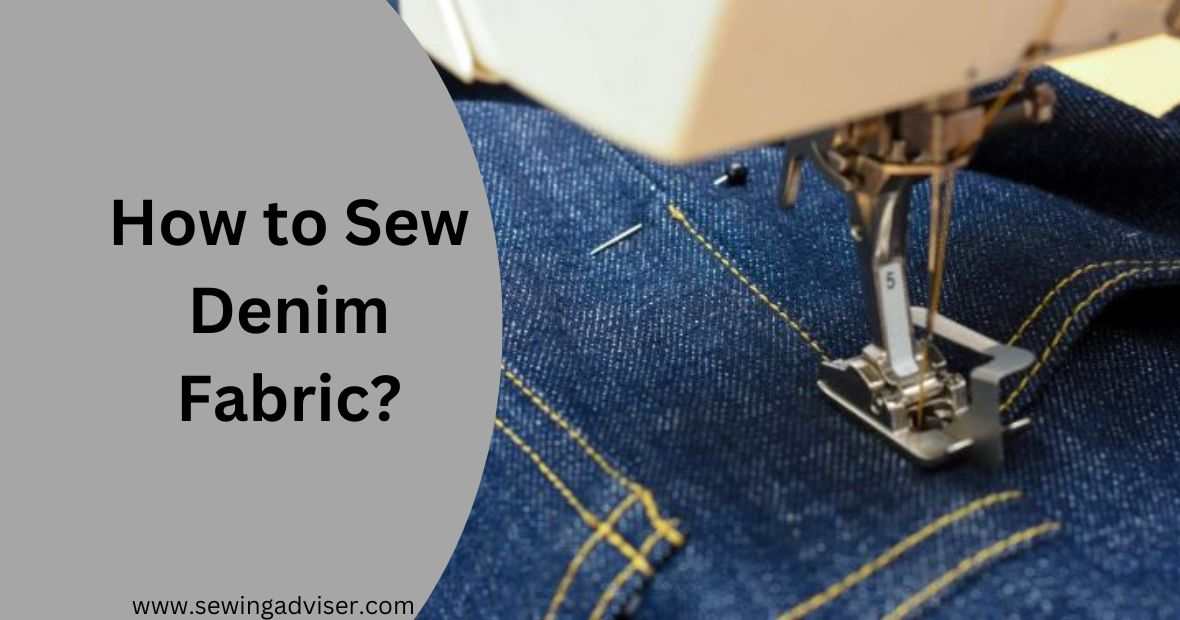
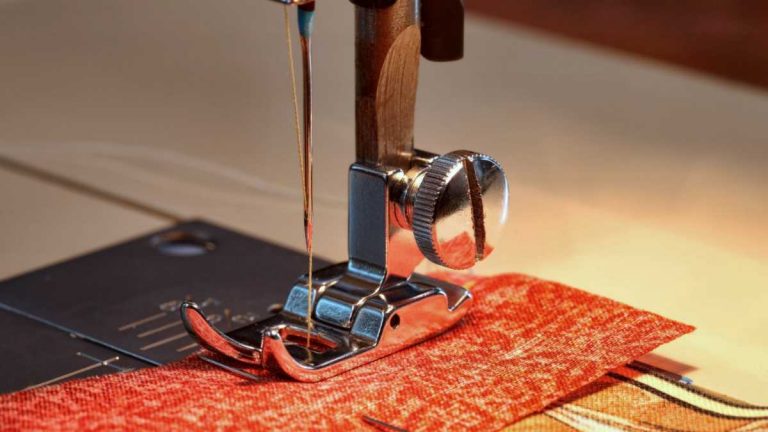
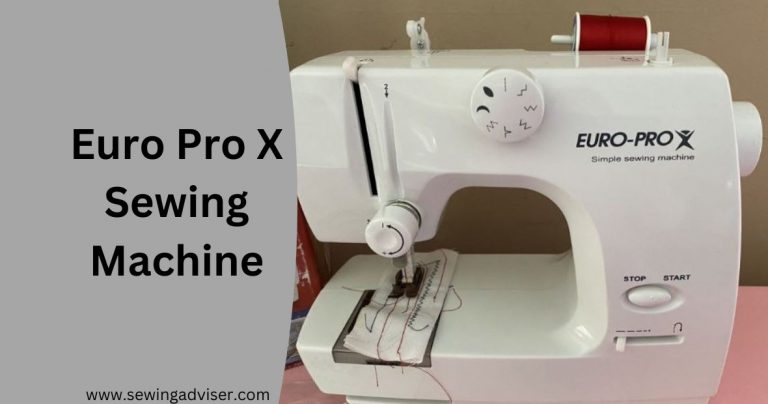

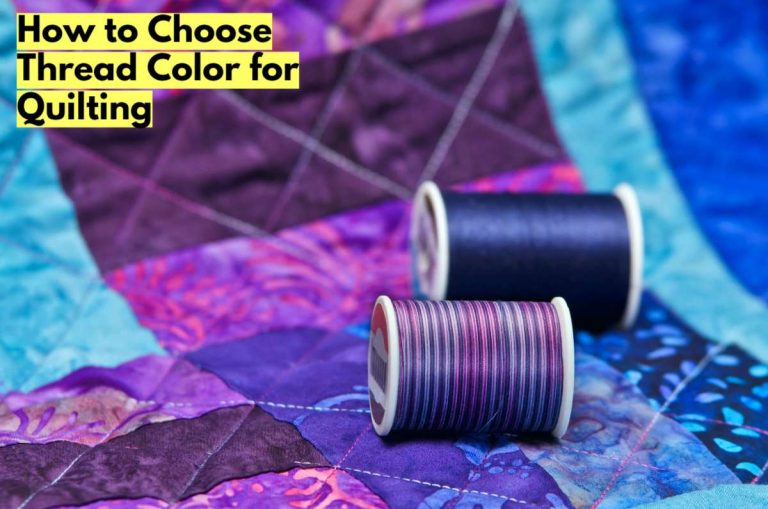
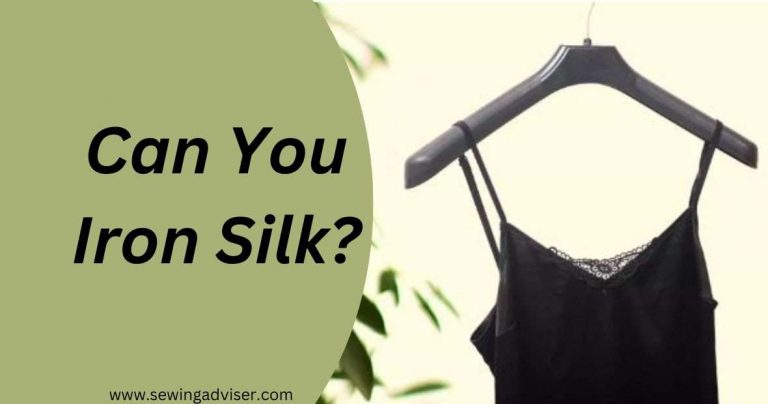
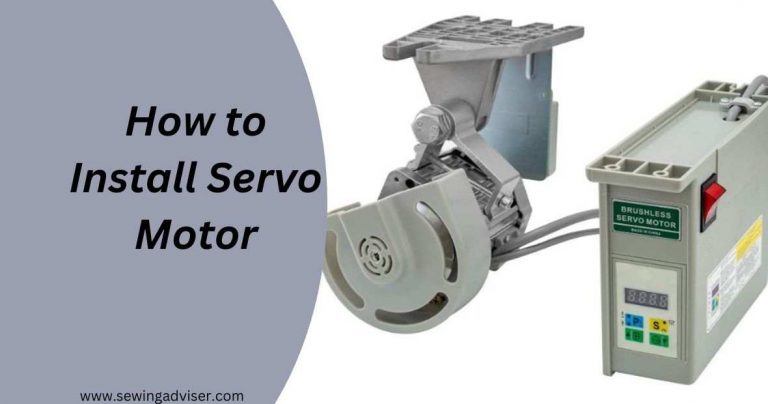
33 Comments